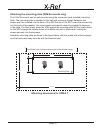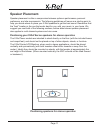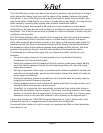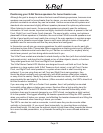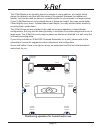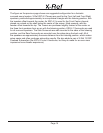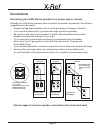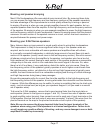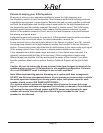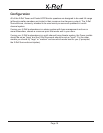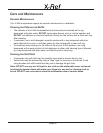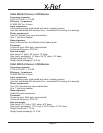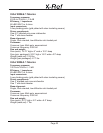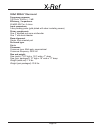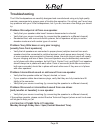
Page 18
Passive bi-amping your X-Ref speakers
Bi-amping is when you use separate ampliers to power the high-frequency and
low-frequency section of each loudspeaker. Most listeners agree that bi-amping produces
a signicant improvement in sound quality. Because the load on each amplier is reduced,
and both the amplication and the high-current signal paths for the high-frequencies and
low-frequencies are kept entirely separate, the result is cleaner sound. The X-Ref series
speakers permit passive bi-amping, which means that the passive crossover for each
section of the speaker remains in-circuit, and no line-level crossover is required between
the preamp and power amps.
Implementing passive bi-amping for one pair of X-Ref speakers requires either two stereo
ampliers or four mono-block amps. For each loudspeaker, remove the
bi-amp terminal links on the input plate (shown in the gures on pages 7 and 16), connect
one power amp channel to the high-frequency section, and another to the low-frequency
section. Connect both power amp channels for each speaker to the same audio input signal
(if the preamp doesn’t have dual outputs, a simple passive splitter can be used).
If four separate mono-block power amps are used, or if two stereo amps are used, it is
generally recommended that they all be the same. Other congurations (some using
different amps) are possible, but they are beyond the scope of this manual. If you have
specic questions about various options, Emotiva Technical Support will be glad to help
you.
Caution: Be sure to remove the bi-amp terminal links from the input terminals of the
speakers when using your X-Ref speakers in a bi-amplied conguration. Failure to
do so will PROBABLY result in damage to one or both ampliers.
Note: When implementing passive bi-amping on a system with bass management,
DO NOT use the bass management feature of your preamp or pre/processor to divide
the audio spectrum between your bi-amp power amps; both power amps for each
speaker should receive THE SAME AUDIO SIGNAL.
(In a system without a subwoofer, both amps should receive the same full-range
signal; in a system with bass management that includes a subwoofer, the subwoofer
will receive the low-pass ltered output and BOTH power amp channels for each
speaker will receive the same high-pass ltered signal intended for the “main”
speaker for that channel).



